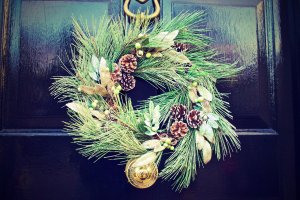Not all “pine” trees are the same – some aren’t pines at all but are fir, cypress, cedar and spruce trees! The aromas, needles and cones differ between them. Here’s a quick rundown to help you get to know the varieties of Christmas trees that you may come across this holiday season.
 Conifers
Conifers
A conifer is a tree that produces cones. Both pine and fir trees are conifers. Conifers are also known as evergreens because they keep their foliage throughout the 4 seasons. There are some conifers that shed needles, like tamarack trees, but those are the exceptions in the conifer order.
Needles
Firs, spruces and pines are the most common Christmas trees. The quickest way to distinguish between a fir, spruce or pine tree is to get a close-up look at the needles. A fir needle is a flat spike that is two-sided and is always less than 2 inches in length. You wouldn’t be able to roll it easily between your fingers. A pine needle comes out of the twig in clusters of two or more. The needle is round, thin and long and can be up to 16 inches, depending on the species. Spruce needles end in sharp points and are square or diamond-shaped. They would easily roll between your fingers. They can vary from less than 1 inch in length to 2 inches long.
Branches
If your ornaments are heavy, fir trees have sturdier branches for holding them. If you’re looking to get the most out of the branch trimmings, pine tree branches are more easily shaped into garlands, wreaths or “roping” (long swags of foliage that can be wrapped and hung around the home). Cedar roping is especially flexible and pliable. Look for some roping where you buy your tree.
 Best Christmas trees
Best Christmas trees
Each family has their own favorite conifer for Christmas, but in North America, there are a few favorites that stand out. The National Christmas Tree Association lists the Douglas fir as one of the top choices. Check out the different varieties and characteristics of trees on their site. The Association also has some suggestions on how to pick out your best tree and how to care for it here. Trial and error will help, but if you’re going for that “Christmas tree smell,” search for fir trees like balsams or Douglas firs. Spruce and pine trees don’t give off much aroma as firs do.
Enjoy the holiday!
A Christmas tree is a lovely central gathering spot for the holiday festivities, but it also is a healthy (albeit temporary) addition to the house. Bringing a little green inside for the holidays boosts our moods and freshens the indoor air. Take some time to get to know your trees and you’ll always pick the perfect one for years to come.